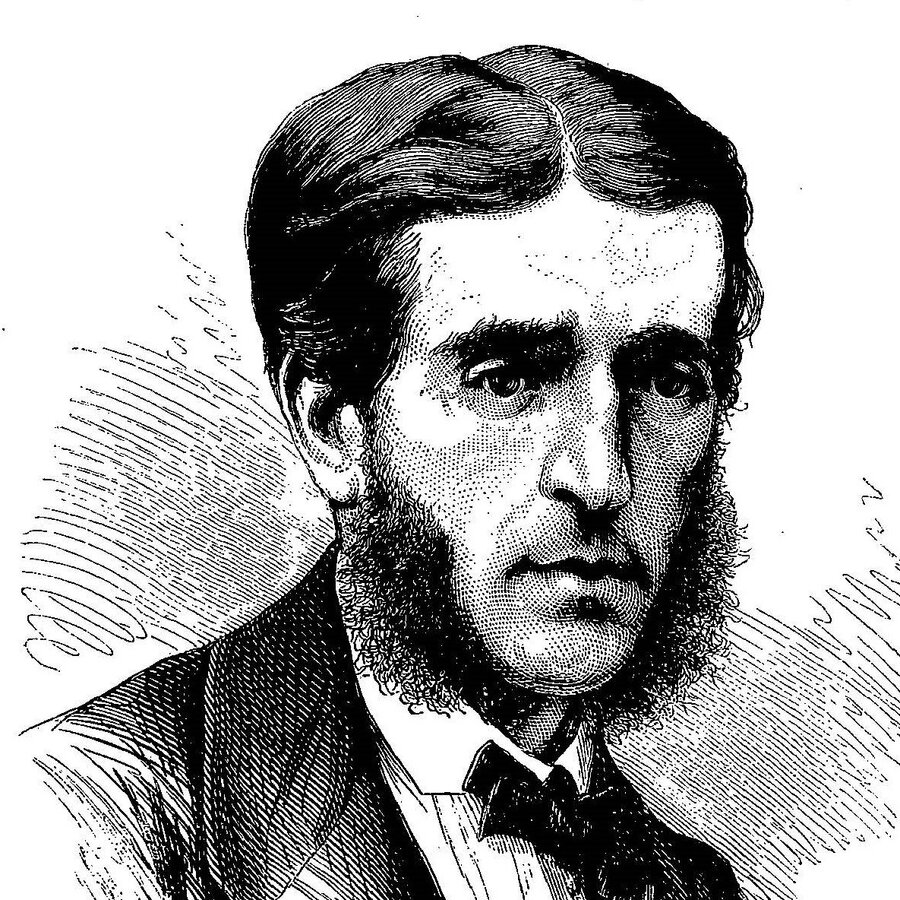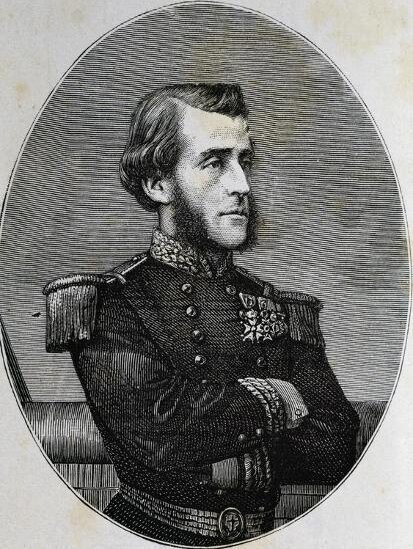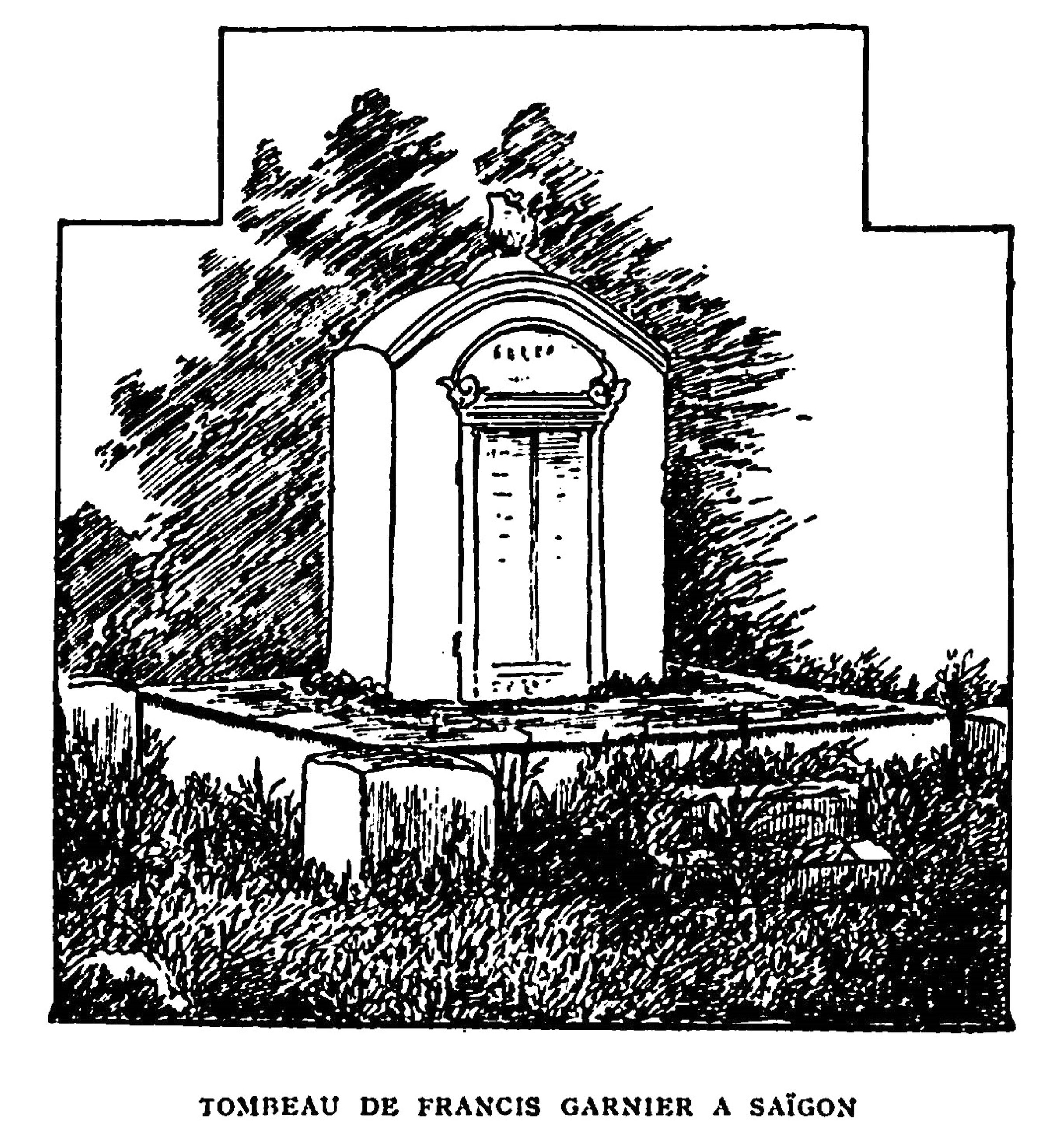Francis Garnier

Lieutenant-de-vaisseau (French Navy Lieutenant) Marie Joseph François ‘Francis’ Garnier (in Vietnamese: Ngạc Nhi) (25 Jul. 1839, Saint-Étienne — 21 Dec. 1873, Hoy-en Khe, in action during the Hanoi siege) was one of the first French explorers to extensively write about Cambodia, the Mekong River, Indochina, Tibet and China.
After joining the Navy at age 15, he navigated to the South American coasts and joined the staff of Admiral Charnier in 1860 for the “campaign of China and Cochinchina.” Nicknamed “Mademoiselle Bonaparte” by his comrades for his slender and fragile frame, Garnier developed early the idea of a powerful French Empire in Asia. Named administrator of Cholon (Saigon) in 1863, he published in 1864 a pamphlet, La Cochinchine francaise, under the pen name of G. Francis.
In June 1866, Garnier joined in Saigon the Mission d’exploration du Mékong under the command of Captain Ernest Doudart de Lagrée, with (among others) anthropologist and physician Louis Joubert, botanist Clovis Thorel, sailor-photographer Émile Gsell, draughtsman and architect Louis Delaporte, and Louis de Carné Jr. from the French Foreign Ministry. As a commandant-in-second, he was in charge of hydrographic, meteorologic and cartographic reports.
Upon Doudart de Lagrée’s death in Yunnan Province, he took over the Mission, leading it up to Shanghai and sailing back to Saigon in June 1868. After a stint as a cartographer at the Navy Ministry in Paris, and a recognition of his work (along with famous explorer David Livingstone) by the French Société de Géographie, he traveled back to Shanghai with and carried on several solo explorations, having obtained an honorary leave from the Navy. His interest in geography and history did not prevent him to constantly look for “new commercial routes with China”, as he titled on of his articles in the Bulletin de la Société de Géographie (February 1872).

1) A portrait of Francis Garnier in the late 1860s. 2) Garnier’s grave in Saigon, where he was temporarily buried on 7 April 1876. [etching in Albert de Pouvourville, Francis Garnier, Les grandes figures coloniales 7, Plon, 1931.]

1) A portrait of Francis Garnier in the late 1860s. 2) Garnier’s grave in Saigon, where he was temporarily buried on 7 April 1876. [etching in Albert de Pouvourville, Francis Garnier, Les grandes figures coloniales 7, Plon, 1931.]
1) A portrait of Francis Garnier in the late 1860s. 2) Garnier’s grave in Saigon, where he was temporarily buried on 7 April 1876. [etching in Albert de Pouvourville, Francis Garnier, Les grandes figures coloniales 7, Plon, 1931.]
Called back by Contre-Amiral Dupré, then Governor of Cochinchina, Garnier reached Hanoi in November 1873. On Dec. 21, he was injured and capured by Chinese-Annamite pirates operating in the area, the Pavillons-Noirs headed by Chinese insurgent Luu Vinh Phuoc. He was found decapitated and emasculated, while his head was given back to the French authorities in 1874. Despite his quite sulfurous reputation — he was accused by some of embezzlment –, he was later granted state funerals in Paris, and no less than five French battleships have been named after him.
An expedition edition of Voyage d’exploration effectué en Indochine pendant les années 1866, 1867 et 1868 [4 vols.], on which he had started to work on whenever he could take some free time from his military obligations during the 1870 – 1871 Prussian blockade of Paris, was published shortly before Garnier’s death in 1873. Twelve years later, the edition including most of Garnier’s dispatches to Le Tour du Monde review was released under the title Voyage d’exploration en Indochine.
Publications
- [anon., signed ‘G. Francis’] La Cochinchine française en 1864.
- ‘Rapport d’ensemble du jury sur l’exposition des produits de l’Agriculture et de l’industrie cochinchinoises qui a eu lieu à Saïgon du 25 février au 5 mars 1866’, Bulletin du Comité agricole et industriel de la Cochinchine, avril 1866.
- Ta-ly, épisode du voyage d’exploration en Indo-Chine, 1869.
- Voyage d’exploration effectué en Indo-Chine par une commission française pendant les années 1866−67−68, par M. Fr. Garnier, lieutenant de vaisseau, chef de la Mission [ext. La Revue maritime et coloniale (RMC), avril, juin, juillet, aout 1869], Paris, A. Challamel, 1869.
- ‘Note sur l’exploration du cours du Cambodge par une commission scientifique française’, BSG XII, 1869, p 97.
- Episode du voyage d’exploration dans l’lndo-Chine, communication adressée à la Societe de Géographie, séance du 30 avril 1869, XVII, 1870, XIX. Paris, Imprimerie Martinet, 1869.
- ‘L’Indochine’, Tour du Monde, 1870 – 1871-1872 – 1er sem. 1873.
- ‘Voyage de Gérard van Wusthof et ses compagnons aux royaumes de Cambodge et de Laower, traduit du hollandais par M. Voelkel’, BSG, 1er sem. 1871.
- Le Siège de Paris, Paris in‑8, 1872.
- Des nouvelles routes de commerce avec la Chine [offprint BSG III, p 147 – 60], Abbeville, Imprimerie Briey, 1872.
- ‘Trades Routes to Western China’, Edinburgh Review 280, April 1873.
- Le Siège de Paris, Journal d’un officier de marine, attaché au *** secteur, 1872.
- La Chronique royale du Cambodge, traduite du cambodgien par M. de Lagrée et ses interprètes, Journal Asiatique, July and August 1872; Paris, Imprimerie nationale, 1873.
- [posth. with L. Delaporte, Dr. Lucien-Eugène Joubert and Dr. Clovis Thorel] Atlas du voyage d’exploration en lndo-Chine, Publication officielle, Paris, Hachette, 2 vols, 1873; 1 Atlas & 1 Album, 1875.
- Voyage dans la Chine centrale, vallée du Yang Tse, fait de mai à aout 1873 par F. Garnier, lieutenant de vaisseau [offprint BSG Jan. 1872], Paris, Ch. Delagrave, with 39 maps, 1874.
- ‘Le rôle de la France en Chine et en Indo-Chine, Article daté de Shangai le 9 août 1873 en réponse à l’article de M. Giquel’, Revue scientifique de la France et de l’étranger 15, 9 Oct. 1875.
- [posth.] Chroniques royales du Cambodge, Paris, Imprimerie Nationale, 1877.
- [post.] De Paris au Tibet, Paris, Hachette, 1882, 442 p. [includes ‘Une exploration de trois mois en Chine centrale’].
- [post.] De la Colonisation de la Cochinchine, Paris, A. Challamel, 1885.
- [posth.] Voyage d’exploration en Indo-Chine, par une commission française présidée par le capitaine de frégate Doudart de Lagrée, relation empruntée au journal Le Tour du Monde revue et annotée par Léon Garnier, Paris, Hachette, 1885. | ENG: Explorations in Indo-China, Bangkok, White Lotus, 1996.
About Francis Garnier
- ‘Francis Garnier’, Revue maritime et coloniale (RMC), Apr-June 1874.
- Jules Harmand, Souvenirs du Tonkin, BSG, 1875.
- Charles Normand, ‘Tongking.: Le fleuve du Tongking et le voyage de Francis Garnier et Balny en 1873; d’après un manuscrit inédit’, L’Exploration, 3e ann., 2e trim., T. VIII, 1879.
- Leopold Lanier, La découverte d’une nouvelle route commerciale dans le Tongking, Societe industrielle d’Amiens, Sept. 1880.
- J. Dupuis, La conquête du Tonkin par vingt-sept Francais, Paris, 1880.
- J. Dupuis, Voyage au Yunnan et ouverture du Fleuve Rouge, Paris, Annales du Musée Guimet/E. Leroux, 1880.
- Génin, Dupuis et F. Garnier au Tonkin, Paris, A. Challamel, 1882 [off-print Bulletin de la Société de Géographie de l’Est, 3e trim. 1882, T. IV].
- M.A.B. de Villemereuil, Explorations et missions de Doudart de Lagrée – Extraits de ses manuscripts, Paris: Bouchard-Huzard, 1883.
- La France en Indo-Chine, a narrative of Garnier’s explorations in Cochinchina, Annam and Tonkin, London, 1884.
- Gervais, ‘La France au Tonkin: Un rapport inédit de A.-F. Garnier’, Nouvelle Revue, Paris, 1885.
- Felix Julien, Lettres d’un précurseur – Doudart de Lagrée – au Cambodge et en Indo-Chine, Paris: Challamel Ainé, 1886.
- Maisonneuve-Lacoste, Notice sur Francis Garnier, Saigon, 1887.
- Hugh Clifford, Further India, being the story of exploration from the earliest times in Burma, Malaya, Siam and Indo-China, New York, Frederick A. Stokes, 1904.
- Mekong Exporation Commission, WP website.
